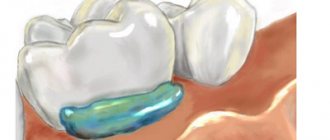Fast Facts About General Anesthesia
Here are some key points about general anesthesia. More detailed and supporting information can be found in the main article.
- The anesthesiologist usually administers a general anesthetic before surgery
- There are some risks associated with the use of general anesthetics, but they are relatively safe when used correctly
- Very rarely, a patient may experience unintentional awakening during surgery
- Side effects of general anesthesia may include dizziness and nausea
- The mechanisms by which anesthesia works are still only partially understood.
General anesthetics cause reversible loss of consciousness and analgesia necessary for surgery . The mechanism of action of anesthetics is not fully understood. There are several theories about this.
General anesthesia is essentially a medically induced coma, not sleep. Anesthetic drugs make the patient indifferent and turn off consciousness .
They are usually administered intravenously or by inhalation . Under anesthesia, the patient does not feel pain and may also experience amnesia.
The drugs will be administered by an anesthesiologist, who will also monitor the patient's vital signs during the procedure.
In this article, we'll look at a number of topics, including the possible side effects of general anesthesia, the risks involved, and some theories about how they work.
Consequences of general anesthesia (narcosis) on the human body
Anesthesia keeps your body safe during surgery. It is an integral part of almost every surgical operation. However, despite the huge role during operations and the large number of positive aspects for the patient, it is important to remember that anesthesia can result in serious complications, because it has a much stronger effect on memory and the brain than drug-induced sleep.
Complications after anesthesia are usually divided according to the degree of prevalence. Some consequences occur in every tenth patient, others - in one in one hundred thousand cases. In this article, we have tried to conveniently present to you all the consequences of anesthesia; side effects that can occur in both children and adults; from the most common to the extremely rare.
After anesthesia, the following adverse reactions most often occur in humans:
- Nausea. Nausea is a very characteristic symptom and occurs in almost every third person. To reduce the risk of nausea, follow the tips below: take time to rest after surgery, try to lie in bed longer, remember that sleep is good medicine; do not drink or eat for some time after surgery; breathe deeply, slowly inhaling the air.
- Tremor. Trembling is a fairly common consequence of anesthesia. Often there is no danger to the body, and the trembling goes away within half an hour. To minimize the likelihood of tremors, make sure you have warm clothes and try not to get cold either before or after surgery. Sleeping in the cold will not do you any good.
- A sore throat. A feeling of dry mouth, discomfort when speaking, and sometimes even constant pain may occur as rehabilitation begins. Usually, they go away within a few hours. But if a sore throat bothers you for more than two days, be sure to tell your doctor about it.
- Headache. A symptom that occurs due to dehydration, anesthetics and, of course, patient anxiety. It goes away on its own after a few hours, sleep or the use of painkillers can also help. Don't hesitate to tell your doctor if the pain is really bad.
- Pre-fainting state. For some time after surgery, many patients experience weakness and dizziness. This is explained by dehydration and the drugs used to administer drug anesthesia. It's unpleasant, but there's no reason to worry.
- Itching. Often itching is just a side effect of anesthetics (such as morphine), but sometimes itching can occur due to allergies. Be sure to tell your doctor if you experience this symptom!
- Muscle pain. Young people are more likely to experience muscle pain for several days after general anesthesia. The cause is intravenous administration of dithiline, a drug used in emergency surgery.
- Pain in the back area. Almost any operation involves the patient being immobile on the operating table, the lower back simply “gets tired”, and this causes discomfort.
- Confusion. Elderly patients often experience confusion after anesthesia. Memory deteriorates, the brain processes information not as brilliantly as before the operation. The following actions will help you avoid disturbances of consciousness, preserve memory during the rehabilitation period and keep your brain in adequate condition: try to lead a healthy lifestyle before hospitalization - normal sleep, the correct diet for the body; For a simple operation, discuss the possibility of returning home as soon as possible with your doctor. Your sleep will be healthier and your nerves will be calmer at home; try to negotiate the use of regional anesthesia; do not forget to take the medications you need at normal times to the hospital;
The following complications and consequences can be encountered much less frequently after and during anesthesia:
- Pulmonary infections. Bronchitis and pneumonia can occur as consequences of drug anesthesia. To avoid them, use a few simple tips: be seriously examined and treated for existing chronic pulmonary diseases before hospitalization; if you smoke, you need to stop using nicotine about 1.5 months before the planned operation; learn everything about painkillers used after general anesthesia, especially if you are about to undergo breast surgery, a consultation with an anesthesiologist will not be superfluous;
- Premature recovery from anesthesia. Very rarely does the patient become conscious during the operation, which leads to the fact that individual episodes of the operation are stored in his memory. With a favorable outcome, on the contrary, drug-induced delirium is observed - a kind of sleep, the influence of which allows a person not to put off the operation in memory, which minimizes the negative consequences on the psyche.
The harm of general anesthesia is greatest in the rarest complications.
Fortunately, in reality there are practically no such cases:
- Nerve damage. There is a feeling of numbness or pain. The effects on the nerves and brain lead to possible disturbances in the perception of heat and cold. Doctors usually use drug treatment, which leads to a fairly rapid recovery of the person. In more rare cases, damage results in limb paralysis. In addition to anesthesia, the reasons that left consequences could be the actions of the surgeon (not necessarily an error, perhaps this was the only possible option that was most favorable for your body); position on the operating table or swelling after surgery.
- Anaphylaxis. Surgery, like anesthesia itself, includes and implies a drug treatment method. Intravenous administration of drugs in considerable volumes can lead to an allergic reaction of the body - anaphylaxis. It develops rarely, but anesthesiologists diagnose and treat it quite successfully; but statistically, anaphylaxis is still even fatal.
- Fatal outcome: damaged brain. Harm from anesthesia is almost never fatal, especially if the operation is planned. The effect of anesthesia on older people, at the same time, is more serious, which increases the risk. When performing brain surgery, the risk is also high: especially with previous problems, a stroke may occur, which will lead to damage to the brain. Naturally, major operations are also quite dangerous for people with impaired heart function.
Drug anesthesia involves the intravenous administration of a considerable amount of drugs, which, of course, does not have the best effect on the human body. But imagine if there was no opportunity to go into such a “sleep” - how many operations could not be performed, and how much more serious could the consequences be?
Related Posts
Story
General anesthetics have been widely used in surgery since 1842, when Crawford Long prescribed diethyl ether to a patient and performed the first painless operation.
On October 16, 1846, American dentist and surgeon Thomas Morton first administered ether anesthesia to a patient to remove a submandibular tumor.
In Russia, the first operation under anesthesia was performed on February 7, 1847 by Pirogov’s friend at the professorial institute, Fyodor Inozemtsev.
Pirogov himself performed the operation using anesthesia a week later. Over the course of a year, 690 operations were performed under anesthesia in 13 cities of Russia, 300 of which were performed by Pirogov!
Soon he took part in military operations in the Caucasus. Here, for the first time in the history of medicine, he began to operate on the wounded with ether anesthesia. In total, the great surgeon performed about 10,000 operations under ether anesthesia.
History of anesthesia use
The first to use anesthesia was Avicenna. He had an interesting method: he cooled the limbs until sensitivity was lost. Ambroise Pare caused loss of sensitivity by pinching nerves and blood vessels. In Ancient Egypt, they used special sleepy tubes soaked in herbs with narcotic effects.
True anesthesia began to be used only at the end of the 19th century. The first drug was Cocaine Hydrochloride, but given its high toxicity and high number of deaths, it was quickly abandoned.
During the war years, they even used ethyl alcohol to bring a person to extreme intoxication, when sensitivity was dulled as much as possible.
Side effects
Nausea is a common side effect of general anesthesia.
There are a number of potential side effects of anesthesia.
Some people may experience none, others several. None of the side effects are particularly long-lasting and usually occur immediately after anesthesia.
Side effects of general anesthesia include:
- temporary confusion and memory loss, although this is more common in older people
- dizziness
- difficulty urinating
- bruising or soreness from the IV
- nausea and vomiting
- trembling and chills
- sore throat due to breathing tube
Risks
In general, general anesthesia is safe. Even very sick patients can be safely anesthetized. The surgical procedure itself involves much greater risk.
Modern general anesthesia is an incredibly safe procedure.
However, older adults and those undergoing lengthy procedures are most at risk for complications . These findings may include postoperative confusion , heart attack, pneumonia, and stroke.
Some specific conditions increase the risk for a patient undergoing general anesthesia, for example:
- obstructive sleep apnea, a condition in which people stop breathing while sleeping
- seizures
- existing heart, kidney or lung disease
- high blood pressure
- alcoholism
- smoking
- previous negative reactions to anesthesia
- medications that may increase bleeding - aspirin, warfarin , for example
- drug allergy
- diabetes
- obesity or overweight
Unintentional intraoperative awakening
This refers to rare cases where patients report remaining conscious during surgery, long after the anesthetic should have taken effect . Some patients are aware of the procedure itself, and some may even feel pain.
Unintentional intraoperative awakening is incredibly rare, affecting approximately 1 in every 19,000 patients under general anesthesia.
Because of the muscle relaxants used at the same time as anesthesia, patients are unable to let their surgeon or anesthesiologist know that they still know what is happening.
Unintentional intraoperative awakening is more likely during emergency surgery.
Patients who experience unintentional intraoperative awakening may suffer from long-term psychological problems. Most often, awareness is short-lived and only sounds, and occurs before or at the very end of the procedure.
According to a recent large-scale study of this phenomenon, patients experienced involuntary twitching , stabbing pain, pain, paralysis and suffocation, among other sensations.
Because unintentional intraoperative awakening is rare, it is unclear exactly why it occurs.
How to prepare your baby for anesthesia
Before surgery, parents must psychologically prepare the baby for hospitalization. For a child, placement in a hospital, not to mention surgery, is the greatest stress. Children are frightened by unfamiliar surroundings, doctors and the absence of parents nearby. Of course, the toddler should not always be informed about anesthesia. If the baby’s pathology causes him discomfort and suffering, he needs to explain that the operation will save him from all this and he will be healthy again.
The child needs to be told about anesthesia that with its help he will be able to fall asleep, and when he wakes up, everything will be over. Parents should be told that they will be with you at all times before and after the operation. The baby should come out of anesthesia and see people close to him nearby.
If the child has reached school age, then he should be explained what awaits him before the operation in order to eliminate fear from the upcoming procedures.
The hardest thing for children is to endure a hunger pause. The baby should not be fed six hours before surgery, but given liquids to drink four hours before surgery. A breastfed baby can be breastfed four hours before surgery, and if he eats formula, then six hours before anesthesia.
Before surgery, the child is given an enema to prevent involuntary stool passing during surgery. Often, bowel cleansing is carried out before strip operations.
To distract the child’s attention from unpleasant procedures, doctors use breathing masks with images of animals or pleasant fruit smells. The electrodes on children's electrocardiographs are shaped like animal faces. All these devices help the little one to be distracted and interested in the procedure being carried out, which will greatly facilitate its implementation.
Types
There are three main types of anesthesia . General anesthesia is just one of them.
Local anesthesia is another option. It is done before minor surgeries such as toenail removal. This reduces pain in small, focused areas of the body, but the person receiving treatment remains conscious.
Regional anesthesia is another type. It numbs the entire part of the body - the lower half, for example, during childbirth. There are two main forms of regional anesthesia: spinal anesthesia and epidural anesthesia.
Spinal anesthesia is used for operations on the lower extremities and abdomen. The anesthetic is injected through a special very thin needle into the intervertebral space of the lumbar region . Epidural anesthesia is used for long-term pain relief. Can be used for operations on the chest, abdomen, and lower extremities. During an epidural, a thin plastic catheter is inserted through which a local anesthetic is injected. Pain relief can last as long as needed.
Contraindications to spinal and epidural anesthesia
There are a number of relative and absolute contraindications for spinal anesthesia, as well as epidural anesthesia. Absolute contraindications include:
- Patient's refusal to undergo spinal anesthesia.
- Infection at the injection site.
- Allergy to local anesthetic.
Relative indications are:
- Disorders of the blood coagulation system, which is responsible for adequately stopping bleeding.
- Hypovolemia, which is a state of reduced vascular filling with blood, occurs with severe bleeding or severe dehydration.
- Neurological disease without a clear diagnosis.
- Increased intracerebral pressure.
If there are absolute contraindications, spinal anesthesia is strictly prohibited.
Local vs General
There are a number of reasons why general anesthesia may be chosen over local anesthesia.
This choice depends on age, health and personal preference.
The main reasons for choosing general anesthesia are:
- The procedure will likely take a long time.
- There is a possibility of significant blood loss.
- This may affect breathing, for example during breast surgery.
- The procedure will make the patient feel uncomfortable.
- It is difficult for the patient to maintain a forced position during surgery.
The purpose of general anesthesia is to induce:
- pain relief or elimination of the natural response to pain
- amnesia or memory loss
- immobility or elimination of motor reflexes
- dream
- relaxation of skeletal muscles
However, the use of general anesthesia poses a higher risk of complications than local anesthesia. If the surgery is minor, then the patient is offered local anesthesia, especially if he has a condition such as sleep apnea or other risk factors.
Preparations for local anesthesia
Local anesthetics in dentistry are divided into:
Essential:
- Novocaine;
- Anestezin;
- Dicaine.
Amide:
- Lidocaine;
- Pyromecaine;
- Trimecaine;
- Prilocaine;
- Mepivacaine;
- Articaine;
- Etidocaine;
- Bupivakakin.
In addition to the main analgesic component, most anesthetics contain vasoconstrictors, such as, for example, adrenaline or epinephrine. Due to the effect of vasoconstriction at the injection site, the washout of the anesthetic occurs more slowly. This allows you to increase the strength and duration of pain relief.
To carry out anesthesia in pediatric dentistry, drugs must be selected with the lowest level of toxicity, but at the same time effective. The choice in this case falls on drugs of the amide group: ultracaine and scandonest in children's dosages. The first of these is, in principle, considered the best anesthetic in dentistry. The analgesic effect of ultracaine occurs quickly and lasts a long time.
You should not endure pain and refuse anesthesia in dentistry while breastfeeding. Local anesthetics are excreted in small quantities in milk, which means they can enter the child’s body. In this case, it is recommended to express several portions of milk before visiting the dentist and not to breastfeed for 24 hours after dental treatment.
If a woman decides not to treat or remove a diseased tooth, then sooner or later complications will arise that will require emergency treatment, which can have an even greater impact on the baby.
If you are planning a pregnancy, be sure to visit the dentist in advance, because... Doctors categorically do not recommend treating teeth during pregnancy using anesthesia, especially in the first trimester. Because It is in the first trimester that the main organs of the child are formed, and the use of anesthetics or anesthesia drugs can negatively affect the further development of the baby.
Anesthesia without adrenaline
To enhance the effect, vasoconstrictor drugs are added to the anesthetic solution - this increases the duration of action and reduces the level of absorption of the drug into the blood. But accidental entry of the vasoconstrictor itself into the bloodstream is associated with serious side effects.
This is why anesthetics without adrenaline are used for pain relief in dentistry for pregnant women, in pediatric practice and in the treatment of patients with diseases of the cardiovascular system.
Preoperative assessment
Before undergoing general anesthesia, patients should undergo a preoperative assessment to determine the most appropriate medications, their amount and combination.
Some of the factors that should be examined in the preoperative assessment include:
- body mass index (BMI)
- disease history
- age
- medications taken
- time before anesthesia
- alcohol or drug use
- use of pharmaceuticals
- examination of the oral cavity, teeth and respiratory tract
- cervical spine mobility study
It is important that you answer these questions accurately. For example, if a history of alcohol or drug use is not mentioned, insufficient anesthesia may be given, which could lead to dangerously high blood pressure or unintentional intraoperative awakening.
Stages
The Gödel classification, developed by Arthur Ernest Gödel in 1937, describes four stages of anesthesia. Modern anesthetics and updated methods of drug have improved the speed of onset of anesthesia , overall safety and recovery, but the four stages remain essentially the same:
General anesthesia is similar to a comatose state and different from sleep.
Stage 1 or induction . This phase occurs between the administration of the drug and loss of consciousness. The patient moves from analgesia without amnesia to analgesia with amnesia.
Stage 2, or arousal stage . The period after loss of consciousness, characterized by agitated and delirious activity. Breathing and heart rate become erratic, and nausea, dilated pupils, and holding your breath may occur.
Due to irregular breathing and the risk of vomiting, there is a danger of suffocation. Modern fast-acting drugs are aimed at limiting the time spent on the 2nd stage of anesthesia.
Stage 3 or surgical anesthesia : muscles relax, vomiting stops, breathing is suppressed. Eye movements slow and then stop. The patient is ready for surgery
Stage 4, or overdose : if too much anesthetic has been administered, then depression of the brain stem occurs . This leads to respiratory and cardiovascular collapse.
The anesthesiologist's priority is to get the patient to stage 3 anesthesia as quickly as possible and keep him there throughout the operation.
Contraindications to anesthesia
There are no absolute contraindications to general anesthesia. But there are relative contraindications, which are presented:
- The presence of a concomitant illness that can have a negative impact on the child’s condition during anesthesia or during recovery from it. Such pathologies include cardiovascular diseases, thymic hypertrophy, adenoids, chronic rhinitis, problems with the respiratory system and others;
- Having an allergy to medications . Based on data on the presence or absence of allergic reactions, the anesthesiologist selects an anesthesia drug;
- Eating before surgery . If the baby has a full stomach, then the operation is canceled, as this is a significant risk of aspiration. If the surgical intervention is urgent, then the contents of the stomach are evacuated using a tube;
- Diseases suffered on the eve of the operation , accompanied by an increase in temperature.
If there are relative contraindications, surgery may be postponed. This does not apply to emergency situations.











